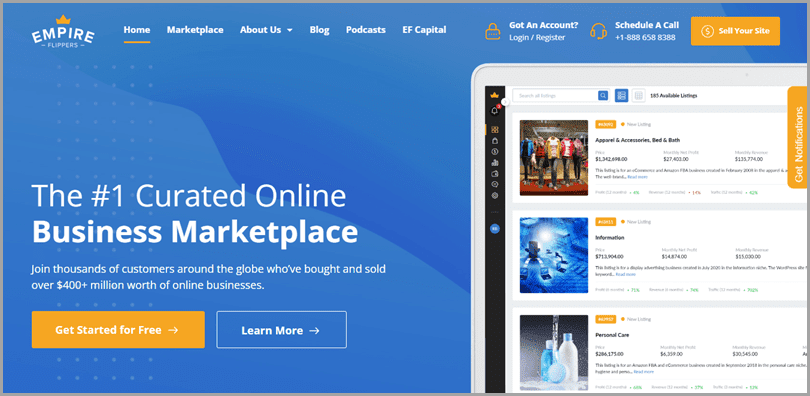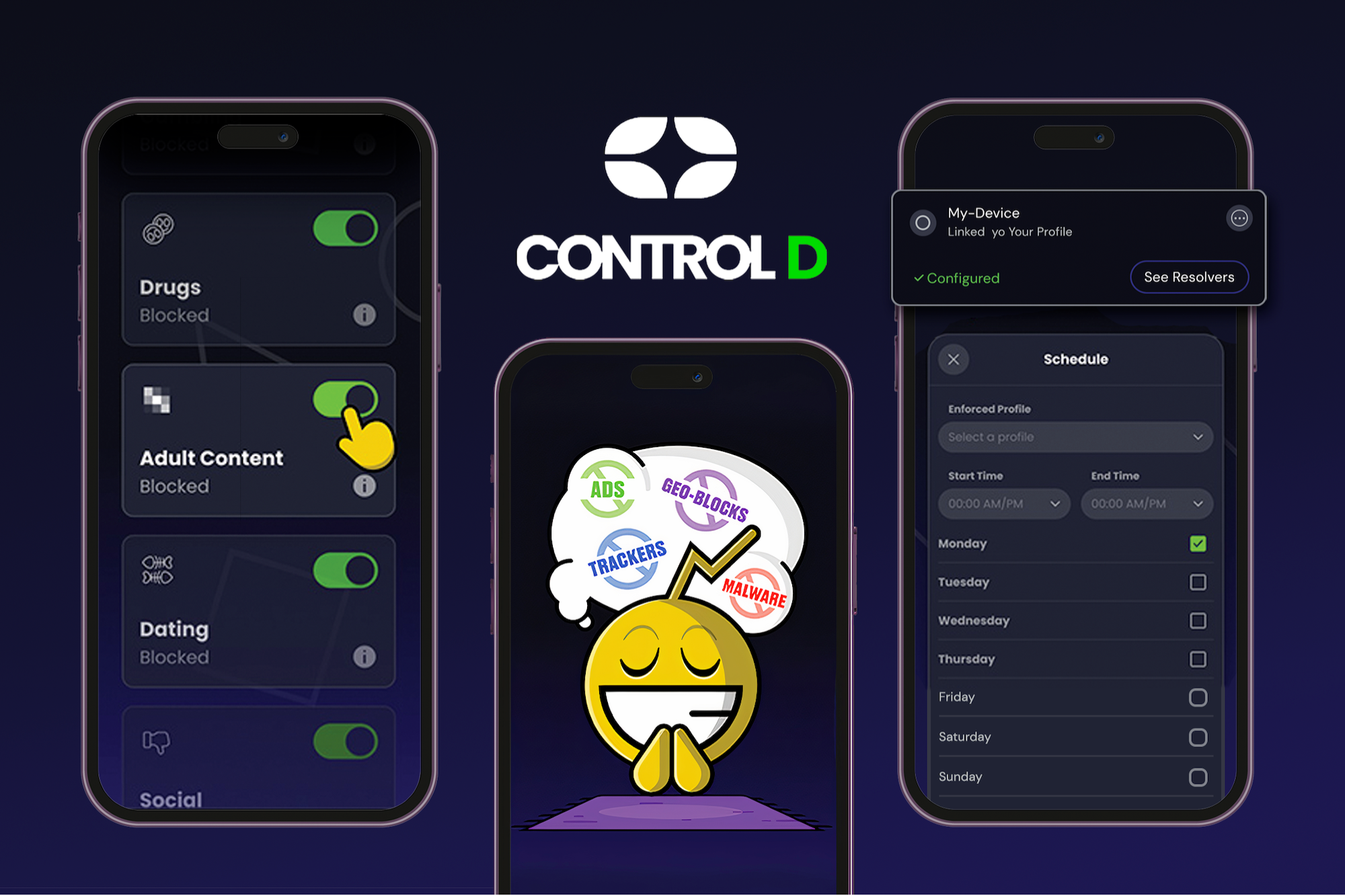AFFILIATE MARKETING
The Ultimate Guide To Selling Your Blog For Profit

There’s a lot of money to be made in the blogging world; whether you’re a small blogger who makes money selling digital products or the owner of a high-trafficked blog that earns through affiliate programs and ads, there is something for everyone.
But as a blog owner, have you ever considered selling your blog?
Selling your blog can be a great way to earn a significant amount of money, especially if it is properly monetized. You can use the money to invest in another business or just give yourself a new start.
This article is here to provide you with all the information you need about selling your blog and how you can get the best price.
How much can you sell your blog for?
Identifying your blog’s worth is the first step in selling it. While there are no standard formulas for calculating a blog’s value, some basic guidelines can help you determine how much your site is worth.
The most basic measure of a blog’s value is its traffic. The more visitors your blog gets, the more valuable it is.
For example, suppose you have a blog that gets 500 visitors per day and another that gets 2,000 visitors per day. In that case, the latter is obviously worth more money than the former, even though both blogs may have similar designs and content quality.
Another way to determine this is by looking at how much money you make with your blog. If you’re making $1,000 per month, then it might be worth $12,000 or more. However, If you’re only making $50 per month (after years of working hard on your blog), then maybe it isn’t worth much.
Once you’ve figured out these two, it will be easier to understand the value of your blog. Of course, keep in mind there are other things to look at too, such as DR, domain age, niche, and audience.
Why should you sell your blog?
Selling your blog is a big step, and hanging on to it for as long as possible can be tempting. But there are some good reasons why you might want to sell your blog.
Here are a few reasons why:
1. You can earn money from an asset that’s currently not producing any income. Even if your site doesn’t generate much traffic now, it may still be worth something because of its potential value in the future.
2. You can achieve financial freedom sooner than expected by investing money in another business.
3. Selling a blog can take away the daily grind of running a website and let you focus on other things in life.
4. If you’re in a time crunch, selling your blog can help you get out of debt or fund an emergency expense.
If any of these apply to you, it’s best to sell your blog while it has some value in the online market.
Where to buy and sell blogs
The market for buying and selling blogs is large, with hundreds of websites offering their services. However, not all of them are worth using. Here are four great options for selling your blog:
Flippa

Flippa is one of the most popular sites for buying and selling websites. The platform has sold thousands of websites across all industries and provides a safe, secure, and easy way to buy or sell websites.
EmpireFlippers

Empire Flippers is another popular marketplace for buying and selling websites with various payment options, including PayPal and Escrow.io. The site also has an advanced search function that lets buyers find what they want based on their budget and other criteria, including niche, traffic, revenue, and more.
GoDaddy domain auction is a self-service, online auction platform where you can list your domain names for sale. You can list your domains in a variety of categories, including “Buy Now,” “Make an Offer,” and “Auction.” It’s worth noting that GoDaddy charges sellers a small membership fee for using its selling service.
Motion Invest is an online marketplace for buying and selling websites. It allows sellers to list their sites for sale and buyers to search for sites that meet their needs. The platform offers a 0% listing fee, so if you want to sell a blog and stay on budget, Motion Invest is a good option.
There is a lot of pressure involved in selling your blog. You’ve probably spent years building it, and now you need to find a buyer. Follow these steps, and you’ll be able to sell your blog for a good price.
The first step to selling your website is to ensure it’s ready for sale. This means getting rid of personal information and ensuring the design is clean, professional, and easy to use. Also, check that your site has no broken links or other technical flaws that might turn off buyers.
Before you start looking for buyers, determine whether your blog is worth selling in the first place. This means you’ll need to make sure that it’s generating enough revenue for its age, has a good number of visitors per month, and has a solid reputation in the niche.
There are several options for selling a blog, including selling directly to another blogger or using a third-party website such as Flippa or Empire Flippers that specializes in this type of transaction. Each option has pros and cons, so think carefully before deciding.
Selling a blog is like selling any other business. You should set a price range to see what kind of offers you get, but also make sure your blog is worth what you are asking. When setting a price range, consider how much time you’ve spent building the site and what it would cost to build an equivalent website from scratch today.
Put together a detailed guide on how to buy the blog and what the buyer needs to know before buying it. This will help eliminate any confusion from buyers interested in purchasing your site and help them make an informed decision about whether or not they should go ahead and purchase. Many bloggers who want to sell their blogs don’t realize buyers look for more than just traffic numbers and social media followers when they buy a blog. A large audience doesn’t mean anything if the traffic can’t be converted into sales or leads, so make sure that you have a plan in place to convert visitors into subscribers before listing your site online
Once you’ve found someone who wants to buy your site, it’s time to start thinking about closing the deal. This is where things get complicated. There are all sorts of documents that need to be signed and hoops to jump through for everything to go smoothly on both sides.
Don’t have a blog to sell yet? Here’s what to do if you’re starting from zero.
The first step to building a blog is choosing a niche. To find a profitable niche, start by looking at other popular blogs that are already established in your desired field. What kinds of topics do they cover? What kinds of problems do they solve for their readers? How could you create something similar but different enough to be unique and valuable?
Once you have an idea of what niche you want to target, try searching Google Trends to see how popular the topic is with people online right now. The more searches related to a given topic, the more potential there is for making money from it.
The most important aspect of any blog is the content. Without it, your blog will not be as successful as you want it to be. This doesn’t mean you need to be a professional writer, but it does mean you need to write articles that are interesting, informative, and useful.
In order for people to want to click on your links, they need to trust you first. That’s why you need to create an image of yourself as an expert in your niche. You can do this by consistently publishing high-quality content that demonstrates your expertise and helps readers solve their problems. Also, you need to pay close attention to grammar and spelling; only then can you expect your readers to take you seriously.
To attract organic traffic, you need to make sure that people can easily find your blog when they search Google or other search engines. This means having a good title tag, meta description, and content that is relevant to your target keywords.
Also, you can use social media like Facebook and Twitter. These sites allow you to post links directly from your blog so that people can see what you’re writing about in real-time.
Try using Google Analytics to track how many people visit your site daily, weekly, or monthly. This will give you an idea of your post’s popularity and help you determine what type of content works best for attracting new readers.
When it comes to monetizing your blog, there are many different ways you can do it. The most common way is through affiliate marketing, which means you promote other people’s products and earn a commission when someone buys something through your link.
Other options include Google ads, courses, e-books, and selling products. The best way is to combine different monetization strategies. Another great way you can earn money with blogs is through blog flipping. But what exactly is blog flipping? Blog flipping is the process of buying a blog with existing content and then shaping it into something more profitable.
The idea behind blog flipping is to purchase a blog that has an established readership and turn it into a money-making asset. You can find blogs that have been neglected by their previous owners, which means they may be available at a relatively low cost.
Once you’ve purchased the site, you’ll need to fix any technical issues (such as broken links), update outdated content, add new content and then promote it through social media channels and search engines.
If you’re able to transform the site into something that generates income from ads or affiliate marketing commissions, then it will be worth more than what you paid for it.
The best part about blog flipping is that you don’t need any prior experience; all you need is an entrepreneurial mindset, some cash in your bank account, and some basic web knowledge.
It’s important to remember that selling your blog can be a rewarding experience but also a lot of work. You need to know what you want out of the sale and go about getting it accordingly. You’ll need to do some research to find the right buyer and then prove to them that your blog is worth buying. But once you’ve gone through all the effort, selling your blog can be highly profitable.
Guest Author: Author and the founder of Blogituplife, Shama Shafiq, writes about blogging and marketing on her blog. Her goal with her blog is to help beginner bloggers who need step-by-step guidance.
Go Daddy Domain Auction

Motion Invest

The process of selling your blog
Step 1: Make sure your blog is ready for sale
Step 2: Determine the value of your blog
Step 3: Decide how you want to sell it
Step 4: Set a price range
Step 5: Make it easy for buyers
Step 6: Know your buyer
Step 7: Close the deal
What to do when you receive an offer
How to create a blog and sell it from scratch
Target the most profitable niche
Write high-quality content
Get traffic
Monetize your blog
Consider buying and selling other blogs for profit
Wrapping it up

Free Download
The Ultimate Guide to Blogging for Small Business
AFFILIATE MARKETING
How to Control the Way People Think About You
Opinions expressed by Entrepreneur contributors are their own.
In today’s digital age, where personal branding and public perception play a vital role in success, strategic PR efforts have become more important than ever. Ulyses Osuna, the founder of Influencer Press, joined our show to share valuable insights on the significance of PR, the evolving landscape, and the keys to achieving business growth while maintaining a fulfilling personal life.
One of the key takeaways from the conversation was the importance of strategic PR efforts in building a personal brand and shaping public perception. Ulyses emphasized that PR is not just about getting media coverage; it’s about controlling the narrative and shaping how others perceive you. By strategically positioning yourself and your brand through effective PR, you can influence public opinion and establish yourself as an authority in your field. Another crucial aspect discussed was the power of leveraging relationships and connections.
Ulyses highlighted the “Buglight Concept,” which involves utilizing the support and connections of others to achieve success. By building strong relationships and leveraging the networks of influential individuals, you can significantly expand your reach and influence. Ulyses’s own success with Influencer Press is a testament to the power of connections in the PR world. While professional success is undoubtedly important, Ulyses also stressed the significance of balancing personal time and fulfillment. In the pursuit of business growth, it’s easy to neglect personal well-being and relationships. However, Ulyses emphasized that true success lies in finding a balance between professional achievements and personal happiness.
By prioritizing personal time and fulfillment, entrepreneurs can sustain long-term growth and avoid burnout. In the ever-evolving landscape of PR, Ulyses highlighted the need for a clear mission when seeking press coverage. He emphasized the importance of aligning your brand with a cause or purpose that resonates with your target audience. By having a clear mission and purpose, you can attract media attention that aligns with your values and goals, ultimately enhancing your brand’s reputation and reach. Additionally, Ulyses discussed the importance of pricing services correctly and finding the right balance between personal involvement and business scalability.
The conversation also touched upon the dynamics of client relationships and the impact of showcasing external support. Ulyses emphasized the value of building strong relationships with clients and going above and beyond to exceed their expectations. Furthermore, he highlighted the importance of showcasing external support, such as media coverage or endorsements, to establish credibility and attract new clients. Ulyses’s own podcast, The Blacklist, where he shares insights and interviews successful entrepreneurs, was also discussed. He explained that launching the podcast was a way to give back to the entrepreneurial community and share valuable knowledge.
By continuously learning from others and implementing breakthrough ideas, Ulyses emphasized the importance of immediate action and continuous improvement for business growth. In conclusion, strategic PR efforts are essential for building a strong personal brand and controlling the narrative in today’s digital age. By leveraging relationships, finding a balance between personal and professional life, and having a clear mission, entrepreneurs can shape public perception, expand their reach, and achieve long-term success. Ulyses Osuna’s insights serve as a valuable guide for those looking to navigate the ever-changing landscape of PR and personal branding.
About The Jeff Fenster Show
Serial entrepreneur Jeff Fenster embarks on an extraordinary journey every week, delving into the stories of exceptional individuals who have defied the norms and blazed their own trails to achieve extraordinary success.
Subscribe to The Jeff Fenster Show: Entrepreneur | Apple | Spotify | Google | Pandora
AFFILIATE MARKETING
Set Your Team up for Success and Let Them Browse the Internet Faster

Disclosure: Our goal is to feature products and services that we think you’ll find interesting and useful. If you purchase them, Entrepreneur may get a small share of the revenue from the sale from our commerce partners.
According to TeamStage, 31 percent of employees waste about a half hour each day, and the top 10 percent of them can waste as much as three hours in a day. Part of that might be attitude, but the other part might be hangups caused by internet speed and advertisements. To nip that lost time in the bud, consider equipping yourself or your team with a tool to help stay on task.
From April 15 through 21, this five-year subscription to Control D Some Control Plan is on sale for just $34.97 (reg. $120). This is the best price for this deal online. This tool is designed to help users browse and use the internet faster while also blocking ads.
Control D is described as a “one-touch solution” for taking control over the productivity of your computer and internet usage. The deal supports use for up to ten devices, and it empowers each user to block advertisements, enjoy faster browsing, and set internet safety rules and restrictions for kids.
Control D’s bandwidth is substantial. It can accommodate up to 10,000 custom rules, block more than 300 servers, support multiple profiles, and unlimited usage. This robust and well-designed tool is a reliable option for any business leader who wants to liberate themselves or team members from distractions online.
Control D is rated a perfect 5/5 stars on Product Hunt.
Remember that from April 15 through 21, this 5-year subscription to Control D Some Control Plan is on sale for just $34.97 (reg. $120)—the best price on the web.
StackSocial prices subject to change.
AFFILIATE MARKETING
Grab Microsoft Project Professional 2021 for $20 During This Flash Sale

Disclosure: Our goal is to feature products and services that we think you’ll find interesting and useful. If you purchase them, Entrepreneur may get a small share of the revenue from the sale from our commerce partners.
If you’re in charge of a business and you don’t have a clear understanding of how to approach projects in an organized and effective manner, that’s a problem. Like many leaders before you, consider leaning on software that’s designed to streamline the project workflow for companies representing a wide range of industries.
A rate that will only be available from April 19 through 22, you can get Microsoft Professional 2021 for just $19.97 (reg. $249).
This well-reviewed software comes with a range of pre-built templates that you can use to set your project off on the right foot. It supports a number of helpful functions like building complex schedules with varying timelines, auto-populating those schedules in instances where it can, and submitting timesheets that can be distinguished by project work and non-project work.
Some additional features of Microsoft Project Professional that can help entrepreneurs and their teams include what-if scenario generation capabilities. Microsoft Project Professional also allows you to sync projects on your local server with those online, which is massively helpful for remote teams.
Its comprehensive and well-curated offerings are part of why Project Professional is rated an average of 4.7/5 stars on the Entrepreneur Store.
Don’t miss this limited-time opportunity to make a worthwhile investment in your business for the price of a beer at the ball game.
A price that will only last from April 19 through 22, you can get Microsoft Professional 2021 for just $19.97 (reg. $249).
StackSocial prices subject to change.
-

 PPC4 days ago
PPC4 days ago19 Best SEO Tools in 2024 (For Every Use Case)
-

 PPC7 days ago
PPC7 days ago4 New Google Ads Performance Max Updates: What You Need to Know
-

 SEO6 days ago
SEO6 days agoGoogle Clarifies Vacation Rental Structured Data
-

 MARKETING6 days ago
MARKETING6 days agoWill Google Buy HubSpot? | Content Marketing Institute
-
SEARCHENGINES6 days ago
Daily Search Forum Recap: April 16, 2024
-

 PPC7 days ago
PPC7 days agoShare Of Voice: Why Is It Important?
-

 PPC6 days ago
PPC6 days agoHow to Collect & Use Customer Data the Right (& Ethical) Way
-

 MARKETING5 days ago
MARKETING5 days agoStreamlining Processes for Increased Efficiency and Results















You must be logged in to post a comment Login